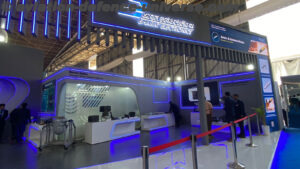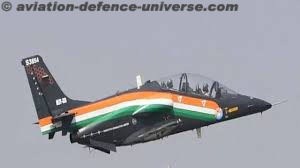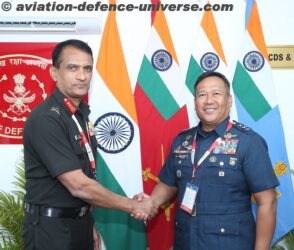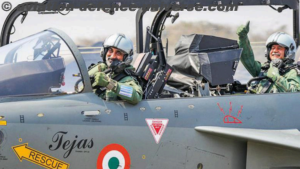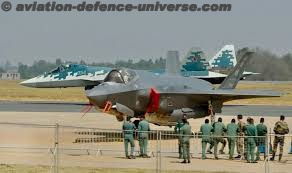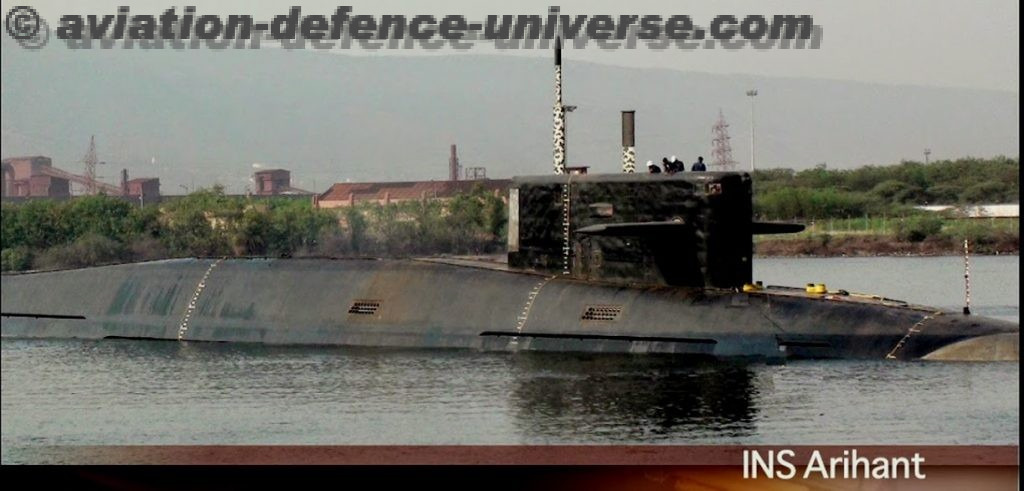
Dear Friends,
Today is the day when Arihant and Arighat are the two words which make us proud . Arihant is a Sanskrit word meaning the ‘Destroyer of the Enemy’. The name befits the strategic significance of a nuclear powered submarine. Among the many options considered, the name ‘Arihant’ was selected and approved at all levels because of its subtlety and appropriateness in conveying the resolve. INS Arighat is an upgraded variant of the Arihant-class submarine. It is the second nuclear-powered ballistic missile submarine being built by India under the Advanced Technology Vessel project to build nuclear submarines at the Ship Building Centre in Visakhapatnam. It has the code name S3. These are the two nuclear ballistic missile submarines giving Indian Navy it’s stealth and prowess. Arihant already in the fleet and Arighat all set to join the fleet anytime.
Along with these the Indian Navy currently operates sixteen diesel powered submarines. India’s submarine fleet is based at two locations: Visakhapatnam on the east coast and Mumbai on the west coast. And today on Indian Navy’s Submarine Day , it is just apt to take a look at it’s submarine force.
India possesses eight working Sindhughosh-class diesel-electric attack submarines. These Kilo-class units act as the mainstay of India’s submarine fleet and are being progressively retrofitted to accommodate the Klub/3M-54E Alfa cruise missile system. These submarines are 72.6 meters long with a 9.9-meter-wide beam and can travel up to 18 knots when submerged. They can remain submerged for about 45 days without surfacing. Their weapons systems are capable of firing torpedoes and anti-ship missiles.
India operates four Shishumar-class vessels designed by Howaldtswerke-Deutsche Werft (HDW) in Germany. While the first two vessels from the Shishumar-class were built at HDW, the third and fourth boats were constructed at the Mazagon Dock in Mumbai from packages supplied by HDW. These submarines are 65 meters long with an 8-meter-wide beam and can travel up to 22.5 knots when submerged. They can remain submerged for about 50 days without surfacing. Their weapons systems are capable of firing torpedoes. All four of the Shishumar-class vessels have undergone refits since they were commissioned.
INS Chakra II is a Russian Akula-class nuclear-powered attack submarine. It is operated by the Indian Navy on a lease for 10 years. It was formally commissioned into service in India in April 2012.
India is expected to build four nuclear powered ballistic missile submarines (SSBNs) under its ATV Program. The first vessel in this class, INS Arihant, was commissioned in 2014. It is powered by an 83MW pressurized light-water reactor (PWR) fueled with enriched uranium. The Arihant-class submarines are 110 meters long with an 11-meter-wide beam and can travel up to 24 knots when submerged. They can remain submerged for about 50 days without surfacing. Their weapons systems are capable of firing torpedoes and submarine-launched ballistic missiles.
India is expected to build six Kalvari-class diesel-electric attack submarines under its Project-75 program. The first vessel in this class was commissioned in 2017. The Kalvari class is based on the French Scorpène-class submarines. These submarines are 67.5 meters long with a 6.2-meter-wide beam and can travel up to 20 knots when submerged. They can remain submerged for about 50 days without surfacing. Their weapons systems are capable of firing torpedoes and anti-ship missiles. Four have already got handed over to Indian Navy .
The submarine day is celebrated on the 08th Dec every year to mark the birth of the Indian Navy’s Submarine Arm with the commissioning of its first submarine, erstwhile INS Kalvari on 08 Dec 1967. On this day, each year, the submarine fraternity celebrates this momentous occasion through a series of events coordinated by INS Virbahu and INS Satavahana, under the aegis of the Submarine Headquarters (SMHQ). On the occasion of the Submarine Anniversary, the senior most officer in station lays a wreath at the submarine Cenotaph at INS Virbahu on behalf of all officers and sailors of the Submarine Arm to pay homage to submariners on ‘Eternal Patrol’.
Eastern Naval Command is home to the most powerful submarine force in the Indian Ocean Region comprising of both nuclear and conventional submarines. The depot ship, INS Virbahu which means “The Heroic Arm” was commissioned on 19 May 1971 by the then Defence Minister Jagjivan Ram, and is regarded as the “Home of the Dolphins”. This year marks the commencement of the 51st year of INS Virbahu, which has provided operational, logistic and administrative support to all submarines at Visakhapatnam.
Indian Navy’s first submarine, INS Kalvari was commissioned on 08 December 1967, under the command of Commander K.S. Subramanian at the Soviet seaport of Riga. Since then this day is aptly celebrated as “Submarine Day” by the Indian Navy. Kalvari embarked on her maiden passage from Riga on 18 April 1968 and arrived at Vishakhapatnam on 16 July 1968 covering 19,000 nautical miles enroute. After almost three decades of service, the sentinel of the deep was decommissioned on 31 May 1996. Post decommissioning of the submarine, it’s fin has been displayed at Beach Road, Visakhapatnam as part of the city’s Maritime Museum. The new submarine by the same name Kalvari was commissioned at Mumbai on 14 December 2017 by the Prime Minister Narendra Modi.
Last year as the nation celebrates its Swarnim Vijay Varsh, team Agrani led by Commodore Ashok Rai, Commanding Officer INS Agrani, officers, men including six submarine sailors undergoing training at INS Agrani and veteran submariners residing at Coimbatore called on 92 years old Commodore KS Subramanian, VSM (Retd) at his residence in Coimbatore and celebrated the occasion.
The 55th Submarine Day was commemorated here at Eastern Naval Command to mark the formation of Indian Navy’s submarine arm with the commissioning of its first submarine, erstwhile INS Kalvari, on December 8, 1967. The Commanding-in-Chief, Vice Admiral Biswajit Dasgupta, conveyed his best wishes and appreciated the tenacity, professionalism and dedication of the submariners.
A wreath-laying ceremony was held at the Submarine Cenotaph at INS Virbahu, at ENC, the mother base of Indian submarines, which was commissioned on May 19, 1971. Rear Admiral A.Y. Sardesai, Flag Officer, Submarines. laid the wreath. Rear Adm R. Vijay Sekhar, Project Director, Ship Building Centre, and others were present.
India has historically imported submarines from Germany, France, and Russia. In the last decade, it has decided to produce more vessels indigenously. For example, India originally planned to build four of its Scorpène-class submarines indigenously and import two. India has since announced that it wishes to produce all submarines natively. This is consistent with the 2014 Make in India initiative, which provides economic incentives when products are manufactured domestically.
India is not an exporter of submarines. However, it decommissioned the INS Sindhuvir (S58) and sold it to the Myanmar Navy in March 2020, now called the UMS Minye Theinkhathu.
Life on board submarines is a life amidst hi-tech war machines which have awesome firepower, state-of-the-art weapon control system, computer controlled machinery and a high standard of habitability. Personnel for this elite arm are taken from various branches subject to their volunteering and clearing the aptitude test and medical standards. The major responsibility of the submarines in peace time is to train for war as effectively as possible, in the knowledge that this will contribute to its prevention. On successful completion of rigorous training, one becomes a proud possessor of the ‘Dolphin Badge” and a member of a very elite arm of the Navy.
Submarines of the Indian Navy are highly sophisticated and technologically advanced platforms. On board submarines, men work with state-of-the art weapons, navigational systems, communication sets, diving equipment, etc. The art of submarine warfare involves having a good understanding of own capabilities and limitations and be able to turn them to own advantage. In order to fulfill the aim of using the submarine as an instrument of tactical warfare, personnel go through many years of rigorous practice in the art of operating weapon and sensors. The elite arm of submarines is for those who yearn for the exclusive challenge of operating below the surface of the oceans in highly technical and powerful submarines.
ADU salutes the submariners of the Indian Navy for running silent and deep to keep the nation floating safely & wishes them a very happy raising day.


































